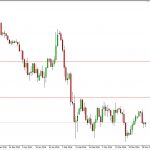For years, market watchers and Fed skeptics had warned that the record low volatility “blanket” that has fallen like a pall over the comatose market was the result of Fed actions, both direct or indirect. And while they mostly spoke metaphorically (although back in 2012 we observed a distinct shift in the VIX futs when the current head of the Fed’s trading desk, Simon Potter, replaced Brian Sack), we now have explicit confirmation that the Fed’s “short vol” position appears to be rather literal.
This is what the next Fed Chair, Jerome Powell – who is scheduled to replace Janet Yellen next month – said during the October 23-24, 2012 FOMC meeting – just one month after the Fed announced QE3, as today’s just released 2012 FOMC transcripts revealed:
I have concerns about more purchases. As others have pointed out, the dealer community is now assuming close to a $4 trillion balance sheet and purchases through the first quarter of 2014. I admit that is a much stronger reaction than I anticipated, and I am uncomfortable with it for a couple of reasons.
First, the question, why stop at $4 trillion? The market in most cases will cheer us for doing more. It will never be enough for the market. Our models will always tell us that we are helping the economy, and I will probably always feel that those benefits are overestimated. And we will be able to tell ourselves that market function is not impaired and that inflation expectations are under control. What is to stop us, other than much faster economic growth, which it is probably not in our power to produce?
And then the punchline:
[W]hen it is time for us to sell, or even to stop buying, the response could be quite strong; there is every reason to expect a strong response. So there are a couple of ways to look at it. It is about $1.2 trillion in sales; you take 60 months, you get about $20 billion a month. That is a very doable thing, it sounds like, in a market where the norm by the middle of next year is $80 billion a month. Another way to look at it, though, is that it’s not so much the sale, the duration; it’s also unloading our short volatility position.













Leave A Comment